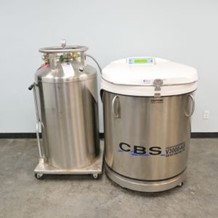Welcome to Environmental Health & Safety
Environmental Health & Safety (EH&S) is an administrative unit that assists University units in meeting their responsibility to protect the environment and to provide a safe and healthful place for employment and learning.
EH&S employs about 100 people who are spread across the UW Seattle campus in multiple locations.
We have six sections organized around the services we provide.
Anesthetic Gases
One of the principal goals of general anesthesia is to prevent patients, both human and animal, from feeling pain during surgery. A common method of anesthesia is the purposeful inhalation of a gas that is known to provide general sedative effects and/or induce unconsciousness. These gases can be separated into two categories: Halogenated anesthetic gases/vapors and nitrous oxide. These may be administered in combination to produce surgical levels of anesthesia.
Hazardous waste storage and labeling reminders
Please keep in mind storage requirements and labeling options for your hazardous chemical waste.
Store waste at or near the generation point: Regulations require all hazardous waste be stored “at or near” its point of generation. In most circumstances, if you have to leave the room or go through a door to get to the storage location (prior to pickup by EH&S), then it is not at or near the point of generation.
Changes to hazardous materials shipping regulations in 2022
The International Air Transport Association (IATA) has published updated regulations manuals for 2022, which may impact University units that ship dangerous goods by air. The list of regulation changes on the IATA website address shipping lithium batteries, infectious substances, and live animals. We have listed below the most relevant changes related to certain types of lithium batteries:
Airgas service changes for cryo storage of biological samples
UW personnel commonly order liquid nitrogen (LN2) from suppliers such as Airgas Inc. and Praxair (aka Linde Welding Gas and Equipment Center) for cryogenic storage used to preserve biological samples.
Airgas recently notified the University that as of January 1, 2022, Airgas staff will no longer perform the following services:

Grounding and Bonding Focus Sheet
Use and dispensing of flammable liquids presents fire and explosion hazards to facilities and occupants. Proper grounding and bonding limits the potential of static electrical spark during dispensing.
Hazardous Material Disposal and Recycling
University personnel have the following options for getting rid of hazardous materials and potentially contaminated supplies and equipment.
Note: Not all options are available for all items.
1. SURPLUS IT.
Make your electronic Chemical Hygiene Plan
Keeping your safety documents up to date and easily accessible are key for staying safe.
Creating Electronic Chemical Hygiene Plans
Chemical Hygiene Plans (CHPs) include lab-specific information and relevant documents in addition to the UW Laboratory Safety Manual (LSM) provided by EH&S. This information must be reviewed at least annually and is necessary to fulfill WAC 296-828-20005. Read the Creatiing Electronic Chemical Hygiene Plans focus sheet for more information and instructions on creating one for your lab.